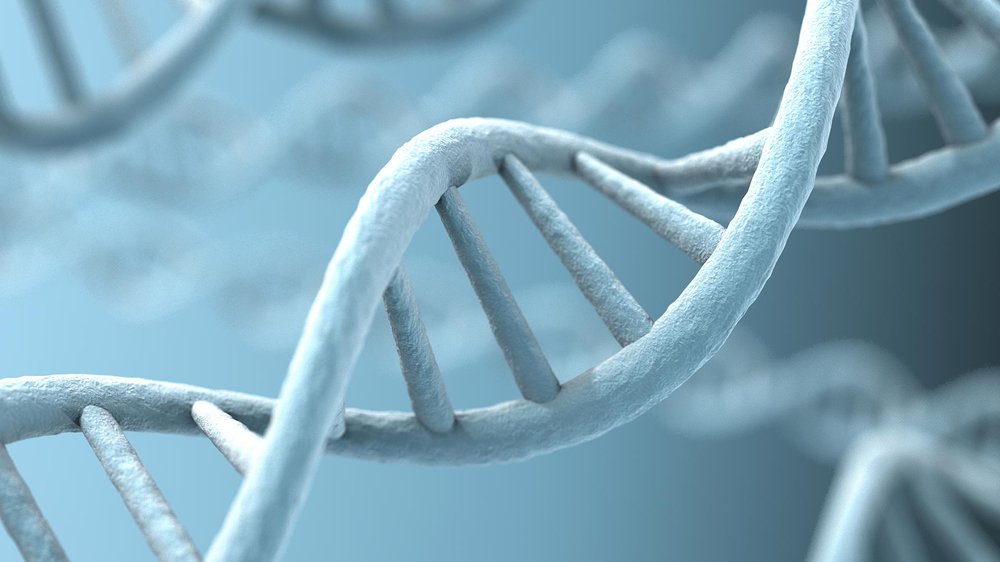Rosalind Franklin and The Most Important Photo Ever Taken
In 2003, the United States celebrated DNA Day for the first time. What started out as a one-time proclamation from Congress became an annual observance on April 25 to highlight the discovery of the structure of deoxyribonucleic acid.
Many people may recognize the names James Watson, Francis Crick, and Maurice Wilkins, as they are attributed with its discovery. They received the Nobel Prize in 1962 for their work on DNA, showing it to be a double-helix polymer consisting of two strands spiraling around each other.

Image credit: Getty Images
However, one scientist had an integral role in the discovery of DNA’s double-helix structure, and may not be as recognizable as Watson and Crick. Her name is Rosalind Franklin, and not only did her work help drive Watson and Crick toward their discoveries, but a special photograph of hers is quite possibly one of the most important photos ever taken.
Destined for the Sciences
Rosalind Elsie Franklin was born on July 25, 1920 in London, England. Even from an early age, Franklin demonstrated an interest in maths and sciences. Her mother knew she was destined for a scientific career, and at 16, Franklin made the decision to pursue an education in that field. In 1938, she entered Newnham College to study physical chemistry, earning her BA in 1941.
Franklin was awarded a research scholarship and spent it at the University of Cambridge with Ronald George Wreyford Norrish. The two did not work well together, with Franklin describing Norrish as “obstinate” and “overbearing.” After resigning from his lab, she joined the British Coal Utilisation Research Association (BCURA) to research the porosity of natural resources. Franklin’s work on the micro-structure of coal led to a greater understanding of how the material interacts in different environments, which was fundamental work that impacted the use of coal years later. She would eventually earn a PhD from Cambridge due to a doctoral thesis inspired by her work with BCURA.
Photograph 51
After earning her PhD, Franklin joined the Laboratoire Central des Services Chimique de l'Etat in Paris, learning x-ray crystallography, or x-ray diffraction analysis. This would become integral to Franklin’s work later on, and helped her land a three-year fellowship to work in the Biophysics Unit at King’s College London. Franklin originally planned to study proteins while building a crystallography section, but instead was tasked with investigating DNA under Maurice Wilkins in 1951.
Working with graduate student Raymond Gosling, Franklin took numerous x-ray diffraction photos of DNA fibers using a fine-focus X-ray tube and micro camera that she refined. One of the duo’s first discoveries was how DNA had two forms which both produced different pictures. There is a dry form, which they called the “A” form, and a wet form, which they called the “B” form. In 1952, one “B” form photograph, in particular, became critical to the understanding of DNA, only visible after about 100 hours of exposure to Franklin’s x-ray. Dubbed “Photo 51,” this discovery is what Franklin is most known for, even with the actual photo being taken by Gosling.

Image credit: Getty Images
Close by at the Cavendish Laboratory in Cambridge University, James Watson and Francis Crick were working on their own theories about the structure of DNA. While Franklin never worked directly with their lab, Wilkins was more associative with them. Wilkins shared Photograph 51 with the two scientists without Franklin’s knowledge or permission. While this photo was integral to Watson and Crick’s published theory on DNA’s double-helical structure, Franklin was not acknowledged in the published paper. Photo 51 is often referred to as one of the most important photos ever taken as it directly led to a greater understanding of DNA and numerous further discoveries about the building blocks of life.
The Structure of a Virus
It is unknown whether Franklin harbored any hard feelings over the use of her data in such a way, especially considering the nature of how science labs were conducted at the time. (In essence, all data and discoveries from the lab belonged to King’s College). In 1953, she transferred to the crystallography lab at Birkbeck College to study plant viruses. Specifically, Franklin devoted time to understanding the structure of the Tobacco Mosaic Virus, or TMV. In tandem with her study of TMV, Franklin delved into the structure of ribonucleic acid, or RNA, a molecule similar to DNA but that is single-stranded. She would later begin to work on deciphering the structure of the poliovirus, but could not complete her research due to unexpected health concerns.
In the fall of 1956, Rosalind Franklin was diagnosed with ovarian cancer. Her long exposure to x-rays may have had a part in its development, but Franklin nonetheless tried to continue her research through her treatment. She passed away on April 16, 1958, at the age of 37.
The Lasting Impact of Dr. Rosalind Franklin
“Science and everyday life cannot and should not be separated.”
-Rosalind Franklin, ca. summer 1940
Throughout Rosalind Franklin’s career as a chemist, she made several scientific discoveries and wrote numerous papers. There are 19 papers on her study of coal and carbons, five about DNA, and 21 on viruses. She was a firm believer that science was necessary to help better the human condition and was always driven in this pursuit. Her work on DNA and virus structures revealed important information about the two that helped prepare scientific studies on vaccines and today’s viruses. If given more time, Franklin likely would have accomplished so much more.
Science always marches forward, and one person’s discovery will always lead to another’s. One way Franklin’s scientific lineage can be seen today is through Dr. Katalin Kariko’s work on mRNA. Dr. Kariko’s research on the concept of using messenger RNA in humans dating back to the late 1980s helped lay the groundwork for today’s COVID-19 vaccines.
While the historical record may never fully be accurate, it is important to remember Franklin’s role in the theory about DNA’s structure, especially on DNA Day. We will never know how things may have turned out if not for the one perfect photo captured by Rosalind Franklin and Ray Gosling. So for any mention of James Watson or Francis Crick regarding their structural theory on DNA, Rosalind Franklin should be on the same breath.
Inspiration
Rosalind Franklin's work has inspired modern-day depictions of her scientific contributions, including the 2015 stage production "Photograph 51" put on by London-based Michael Grandage Company. Nicole Kidman portrayed Franklin, for which she won two awards. Here is Kidman talking about Franklin, the importance of highlighting stories of women, and her personal connection to science through her father's work as a biochemist.